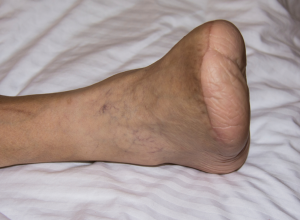
Amputation
Amputation is the medical term for removal of all or part of a limb or other body part such a hand, foot, finger or toe. The need for amputation can arise from trauma, medical illnesses and surgery.
The most common cause of amputation is poor blood circulation arising from a variety of medical conditions including peripheral arterial disease, diabetes, frostbite and Buerger’s disease. When the blood does not flow freely to the extremities, the cells there do not get enough nutrients and oxygen, which causes the tissue to begin dying. Infection and gangrene can set in, leading to the need for amputation. Severe injury from accidents (automobile, lawn mower, etc) can also lead to the need for amputation, as can cancerous tumors.
An estimated 1.8 million Americans have had limb amputations. Amputation of the leg is the most common amputation surgery performed annually. Some patients can function without the lost body part, while others must rely on a prosthetic device to live normally.
Notice concerning medical entries:
Articles having medical content shall serve exclusively for the purpose of general information. Such articles are not suitable for any (self-) diagnosis and treatment of individual illnesses and medical indications. In particular, they cannot substitute for the examination, advice, or treatment by a licensed physician or pharmacist. No replies to any individual questions shall be effected through the articles.










